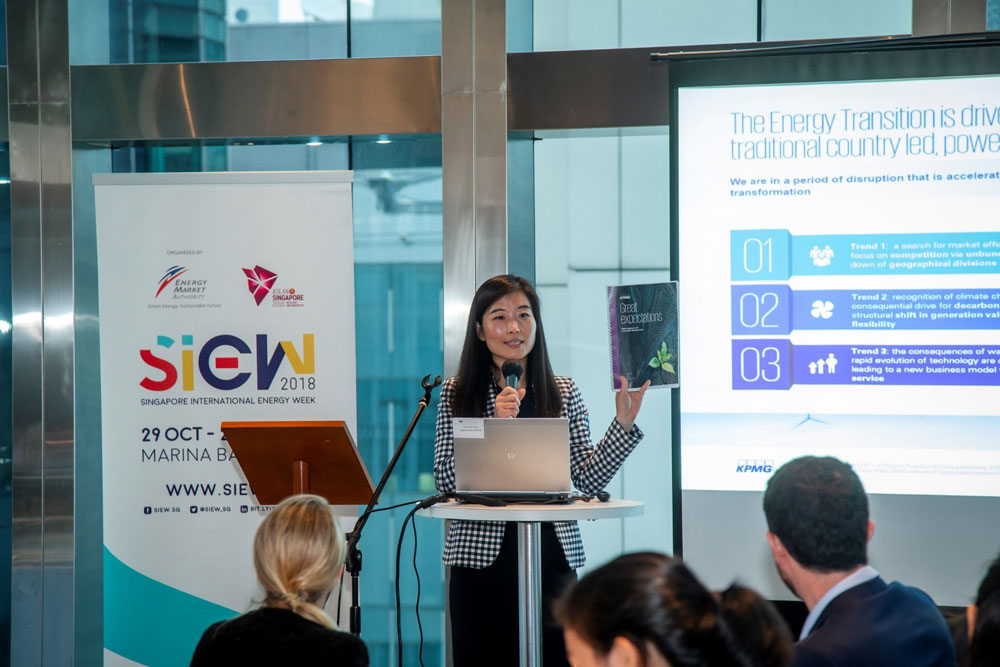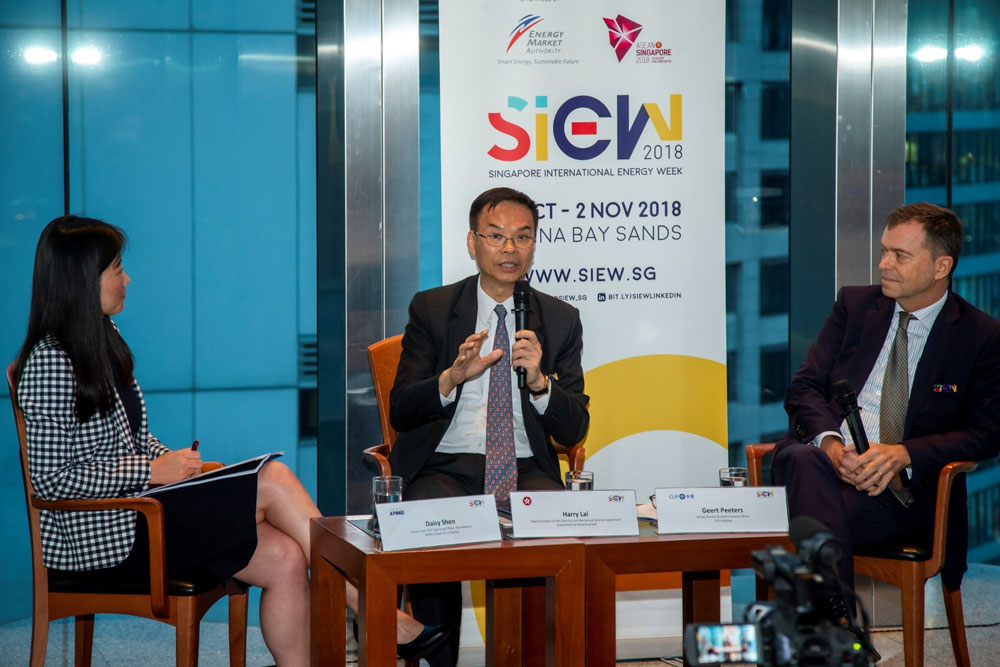Asia Pacific needs to boost energy investments in the region to realise its clean energy ambitions, said speakers at the Hong Kong edition of SIEW Energy Insights.

Daisy Shen of KPMG sharing the key trends driving Asia Pacific’s energy transition.
Discussions at the SIEW Energy Insights in Hong Kong focused on Asia Pacific’s growing energy needs and investments required for sustainable energy projects. The speakers also shared their views on the theme for SIEW 2018, “Transforming Energy: Invest, Innovate, Integrate”.

Harry Lai, Deputy Director of the Electrical and Mechanical Services Department (EMSD), Government of the Hong Kong SAR sharing his views alongside
Geert Peeters, Group Director & Chief Financial Officer of CLP at the panel discussion moderated by KPMG.
Here are three key takeaways from the discussion:
1. Environmental priorities will continue to drive energy transformation over the next decade
The panel agreed that environmental priorities will help shape the energy transformation in the next decade, with the Paris Agreement climate accord as a key framework for this global push for clean energy.
In the Asia Pacific, the APEC Energy Working Group is looking to reduce energy intensity by 45 percent by 2035 and to double the share of renewables in the APEC energy mix by 2030. According to KPMG, China now contributes about 30% share of global wind and solar power capacity and plans to increase renewable energy investment by RMB 2.5 trillion, as part of its 13th 5-Year Plan. Hong Kong is taking steps to reduce carbon intensity by 65 percent by 2030. On the supply side, this would involve greater investment in gas-powered and renewable technologies to replace coal. On the demand side, Hong Kong aims to improve energy efficiency in buildings, given that buildings account for over 90 percent of electricity consumption there. To drive energy efficiency, the Electrical and Mechanical Services Department (EMSD) has launched a new initiative, InnoPortal which is a platform to share innovation and technology solutions for the electrical and mechanical sector.
2. Innovation will be a powerful enabler of clean energy transition
New technology in data analytics and artificial intelligence hold great potential to boost Asia Pacific’s clean energy transition. Innovative technologies will continue to optimise output and drive customer engagement. For instance, advancements in wind and solar have made them economically-viable renewable energy solutions. That said, the panel said that energy decision makers also need to consider innovative business models to accommodate changing consumer needs. These could include innovative financing structures like green bonds and energy transition bonds.
3. Clear market and policy standards needed to unlock green financing value
Financing the global clean energy transition presents both opportunities and challenges. With green financing less developed in Asia Pacific, policymakers and energy players need to establish clear market and policy standards, as well as credible accreditation processes, to attract and retain investors in the long-term. The panel highlighted the sustainability of various financing mechanisms and the bankability of renewable energy projects as important considerations for renewable energy financing.